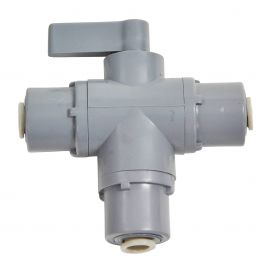Two thoughts here. First, if you’ve done it before and are comfortable with the design then do it again.
Second, what about setting up your RO Buddy to fill a ATO reservoir and use a Tunze RO water controller to manage the water levels in your reservoir and running through your RODI system. Then use a separate pump and sensor system to transfer from your reservoir to your sump. The single failure is if the pump feeding the sump from the reservoir fails “on”. But hopefully you have an alarm or something if the sump gets too full.
Second, what about setting up your RO Buddy to fill a ATO reservoir and use a Tunze RO water controller to manage the water levels in your reservoir and running through your RODI system. Then use a separate pump and sensor system to transfer from your reservoir to your sump. The single failure is if the pump feeding the sump from the reservoir fails “on”. But hopefully you have an alarm or something if the sump gets too full.


















